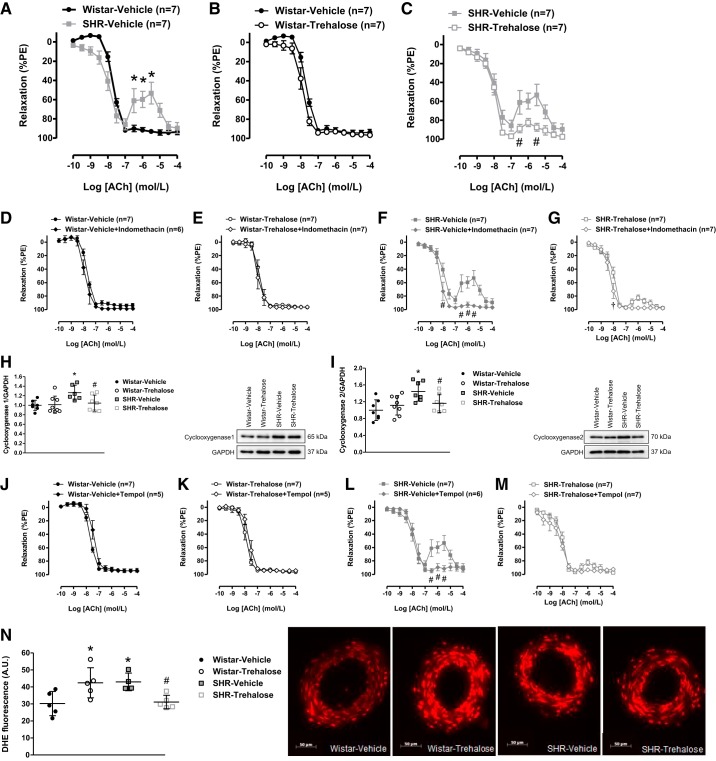Fig. 5.
Trehalose treatment prevents the generation of endothelium-derived contracting factors in mesenteric resistance arteries (MRAs) from spontaneously hypertensive rats (SHRs). A–C: concentration-response curves to ACh in MRAs from vehicle-treated Wistar and SHRs (A), vehicle- and trehalose-treated Wistar rats (B), vehicle- and trehalose-treated SHRs (C). PE, phenylephrine. D–G: concentration-response curves to ACh, with or without indomethacin (10 μmol/L), in MRAs from vehicle-treated Wistar rats (D), trehalose-treated Wistar rats (E), vehicle-treated SHRs (F), and trehalose-treated SHRs (G). H and I: protein expression analysis for cyclooxygenase 1 (H) and cyclooxygenase 2 (I) in MRAs. Left: densitometric analysis; right: representative images of immunoblots. J–M: concentration-response curves to ACh, with or without tempol (100 μmol/L), in MRAs from vehicle-treated Wistar rats (J), trehalose-treated Wistar rats (K), vehicle-treated SHRs (L), and trehalose-treated SHRs (M). N: reactive oxygen species measurement with dihydroethidium (DHE) fluorescent staining in MRAs. A.U., arbitrary units. Left: densitometric analysis; right: representative images. For A–N, n = 4–7. Two-way ANOVA: *P < 0.05 vs. Wistar vehicle, #P < 0.05 vs. SHR vehicle, †P < 0.05 vs. SHR trehalose. One-way ANOVA: Wistar vehicle, #P < 0.05 vs. SHR vehicle.

